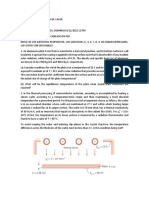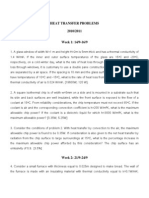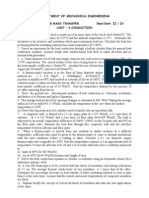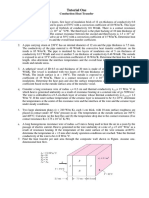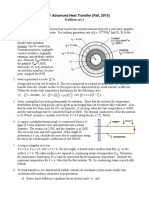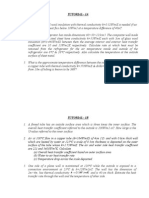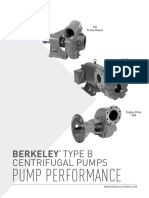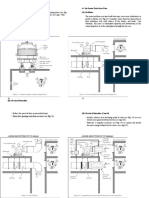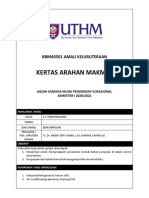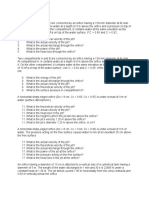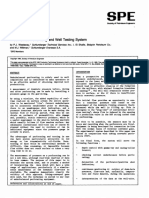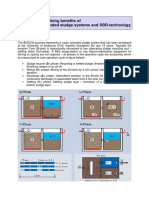0% found this document useful (0 votes)
5 views6 pagesTutorial 2
The document outlines a series of thermal analysis problems involving composite walls, heat conduction, and convection in various scenarios. It includes derivations for temperature distributions, heat generation rates, and the effects of insulation and convection coefficients on thermal performance. Each problem requires the application of thermal resistance concepts and heat transfer principles to determine key parameters such as temperatures, heat flows, and required velocities for processes like baking and annealing.
Uploaded by
mewaldivyanshuCopyright
© © All Rights Reserved
We take content rights seriously. If you suspect this is your content, claim it here.
Available Formats
Download as PDF, TXT or read online on Scribd
0% found this document useful (0 votes)
5 views6 pagesTutorial 2
The document outlines a series of thermal analysis problems involving composite walls, heat conduction, and convection in various scenarios. It includes derivations for temperature distributions, heat generation rates, and the effects of insulation and convection coefficients on thermal performance. Each problem requires the application of thermal resistance concepts and heat transfer principles to determine key parameters such as temperatures, heat flows, and required velocities for processes like baking and annealing.
Uploaded by
mewaldivyanshuCopyright
© © All Rights Reserved
We take content rights seriously. If you suspect this is your content, claim it here.
Available Formats
Download as PDF, TXT or read online on Scribd
/ 6
